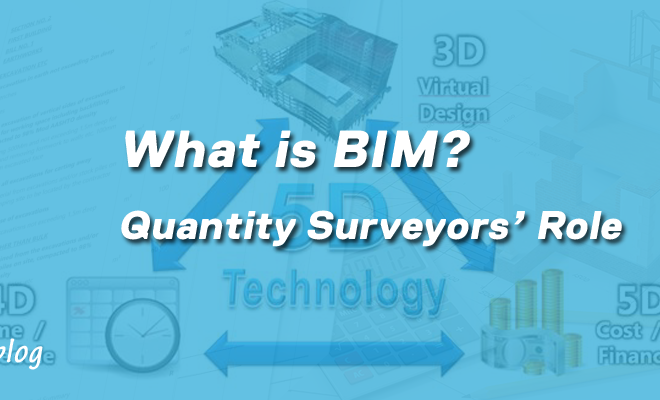Managing Building Projects Through Social Media Enabled Communication
The Construction Industry’s Information Problem
The construction industry is a project-based industry. The building projects are unique, complex, information intensive and require the transfer of large quantities of documents. Every construction project usually involves a number of different actors drawn from multiple disciplines in the fields of architecture, construction, engineering, finance, banking and surveying, among others. Given that construction projects are temporal endeavours, there is a lot of dynamism in the construction workplace. Dainty et al. (2006) noted that the temporal nature of a construction project and the dynamism in the construction workplaces plays a key role in complicating an already problematic communication environment where the straightforward flow of information is greatly hindered by the use of a technical language and an adversarial culture.
The process of constructing buildings is a labour-intensive process that involves a series of sequenced activities (Cooke, 2013). These activities are particularly aimed at transforming the developer’s/client’s idea into a product that meets their requirements that are usually captured during the project design brief development. When such unfamiliar and unique groups of people come together in an endeavour, they are facilitated by communication to be able to accomplish their tasks in an effectively coordinated and managed manner.
The Project Management Institute (PMI, 2013) recognises communication of information as a core competency for the project managers. According to Rawalai (2017), there is a need for all the stakeholders of the building process to interact efficiently and effectively. This interaction is however not always possible due to the complexity of construction projects, and the use of technical language which brings about ineffective communication. The traditional communication model is ineffective in managing the construction process. Shami and Elzarka (2000) point out that when the traditional paper-based communication model is used, the number of communication channels increases exponentially relative to the size of the project and the number of project stakeholders involved. This subsequently lengthens the process and increases the cost of sharing information.
What is discussed?
The aim of this article is, through a review of the literature, to look at the possibility of social media software to support the core project management processes while also providing a collaborative electronic workspace on the internet. It seeks to shed some light on the question: “Can social media support collaboration within construction teams?”
Summary
Communication in the construction industry is faced by the following problems: fragmented nature of the construction industry, stringent organizational hierarchies, provision of inadequate information and the lack of coordination between the design and construction phases (Rawalai, 2017). Improving communication of information within project teams can lead to a reduction in project failures, better innovative technical solutions, improved quality of the project and facilitate better decision making during project briefing. Currently, the industry is moving towards the adoption of web-based software to help manage project information and support communication of project information and collaboration.
Internet and Social Media in Building Projects Management
The internet is a short form for Interconnected Network, implying that it is a giant network of networks. It would be appropriate to refer to it as a “network infrastructure”; where networks are interconnected through communication channels, similar to a road infrastructure network in a country.
Dr Owen Conlan of Trinity College Dublin, in his lecture: Introduction to Web Technologies, attributed the invention of the internet to an early research performed by the US Department of Defence in 1962. The research established ARPAnet (Advanced Research Project Agency) in order to connect the US Department of Defence network. Conlan explains that the original aim of inventing the internet was to create a network that would allow users of the research computer at one university to be able to talk to research computers at other universities.
The advent of the internet led to the creation of the world wide web. This is attributed to Sir Berners Lee who was working as a fellow at CERN Laboratory (The European Organization for Nuclear Research) in Geneva, Switzerland when he first outlined his concept of a computer platform that could facilitate collaboration among researchers who were based in different parts of the world. Later, the web is said to have undergone a transformation and the improvements were captured in a web versioning nomenclature as web 1.0, web 2.0 etc.
The first implementation of the web represents web 1.0 which, according to Berners Lee be considered the “read-only-web” which was alluding to the fact that a small number of writers would create web pages for a large number of readers. The web was about information sharing and online presence. As a result, people would get information by going directly to the source. Therefore, the web 1.0 was a system of interconnected hypertext documents, with less graphical and multimedia files, accessed via the internet. The websites developed were static (Naik and Shivalingaiah, 2009).
Web 2.0
Berners Lee referred to this web as a “read-write web”. By this, he was alluding to the ability of web users to contribute content to the web and interact with other web users. For example, users of social media platforms can write web content in terms of posts and interact with others via online chats, reactions and comments.
Web 2.0 allowed the development of e-commerce, collaboration, e-learning, based forums, file sharing and emailing. Examples of websites based on web 2.0 technology include YouTube, Flickr, Facebook and Wikipedia (Naik and Shivalingaiah, 2009).
Easley and Kleinberg, (2010) attributed the emergence of web 2.0 to the following major forces:
- The growth of Web authoring styles that enabled many people to collectively create and maintain shared content;
- The movement of people’s personal online data (including e-mail, calendars, photos, and videos) from their own computers to services offered and hosted by large companies; and
- The growth of linking styles that emphasize online connections between people, not just between documents.
Social Computing
Social computing is defined as a social structure in which technology puts power in communities and not in institutions. It is evident in the use of social media and web technologies to manage project tasks.
Social computing advocates for the use of web 2.0 technologies in facilitating the project teams need for better information sharing, need for increased collaboration and empowerment for teams to get things done in order to realise the goals and objectives of the organizations. The use of social media technology cuts down on travel costs and the need for the team members to be co-located.
Social technologies that can be used by organizations, individuals and enterprises (including construction project managers and construction firms/organizations) include the following:
- Media and file sharing: upload, share and comment on photos, videos, audios,
- Social networks: keep connected through personal and business profiles,
- Blogs: publish and discuss opinions and experiences,
- Wikis: search, create and adapt articles and rapidly access stored knowledge,
- Discussion forums: discuss topics in open communities and rapidly access expertise, and
- Shared workspaces: co-create content and coordinate joint projects and tasks.
New approaches to construction delivery such as the Integrated Project Delivery (IPD) approach are driving the research into better collaborative tools. Integrated Project Delivery is an approach that seeks to integrate project stakeholders within project teams with the aim of meeting the owner’s requirement using the best collaborative tools to reduce time and cost.
The internet has enabled the development of distributed systems that support cross-organizational collaboration, while also providing the opportunity to automate teamwork and workflow processes. Most of the internet-based information technology adopted in the modern workplace include the use of e-mail, file sharing with e-mail attachments and the use of shared databases, among others. This generation of web-based tools and services can be harnessed to help automate the construction industry.
Social media be defined as “a group of Internet-based and mobile-based applications and services that build on the ideological and technological foundations of web 2.0 and that allows the creation and exchange of user-generated content and joining of online communities” (Rawalai, 2017). It includes software that supports online/offline group interaction such as Facebook at Work, Slack and SharePoint.
Types of social media platforms:
- Collaborative projects: Dropbox, Reddit etc.
- Blogs: WordPress blogs etc.
- Content communities: YouTube, Spotify, Vimeo etc.
- Social networking sites: Facebook, Twitter, Instagram, Google Plus etc.
- Virtual game worlds: Minecraft
- Virtual social worlds: e.g. InWordz
Social Project Management
Social project management is a methodology that aims at leveraging the full social networking of project communities. It is an approach that looks at a construction project as a community of experts that require social interactions. A project community is an entire social network related to a project, including the project team, the project stakeholders, the management and other interested parties.
Social project management looks at the application of the concept of social networking in projects. It is basically a collaborative approach to projects.
Social project management applies the following concepts:
- Social networking paradigm – social project management software makes the project process visible to everyone. This allows the project teams to achieve transparency to project progress and status and increase collaboration.
- “Re-tweet” paradigm – it engages the wider corporate and external networks. This allows the interested stakeholders to engage socially with the project teams and give their input in helping to accomplish the project goals.
Further Reading:
Cooke, T. (2013) Can knowledge sharing mitigate the effect of construction project
complexity? Construction Innovation, Vol. 13 Issue: 1, pp.5-9, Emerald Group Publishing Limited.
Dainty, A., Moore, D., and Murray, M. (2006) Communication in Construction: Theory and
Practice. London and New York: Taylor and Francis.
Easley, D. and Kleinberg, J. (2010) Networks, Crowds, and Markets: Reasoning about a Highly
Connected World, Cambridge University Press.
Naik, U. and Shivalingaiah, D. (2009) Comparative study of web 1.0, web 2.0 and web 3.0. In:
6th International CALIBER Conference 2008, University of Allahabad, Allahabad.
Project Management Institute (2013) The High Cost of Low Performance: The Essential Role of
Communication. Survey, PMI.
Rawalai, V. (2017) Social media platforms for construction project management. A thesis
submitted to the School of Architecture, in fulfilment of the requirements for the degree of Masters of Building Science. Victoria University of Wellington.
Shami, M. and Elzarka, H. (2000) An Internet-Based Communication Model For A/E/C
Industry. International Association for Automation and Robotics in Construction (IAARC), 1 – 6.
Read Also:
- Opinion: Shaping the Construction Industry’s Future.
- Opinion: Mentorship for Construction Careers.
- ARCHICAD: Intuitive BIM made by Architects for Architects.
Nzangi Muimi
I’m a Quantity Surveyor, Educator and the founder of QuantBuild Academy, the fastest-growing technology-focused YouTube channel online. I am passionate about construction information technology and the digitization of the construction industry.
Tags In
Related Posts
Leave a Reply Cancel reply
Search
Popular Categories
- ARCHICAD Tutorials (4)
- Construction (16)
- Construction IT (12)
- Construction Law (4)
- Cost Management (14)
- Tutorials (5)





